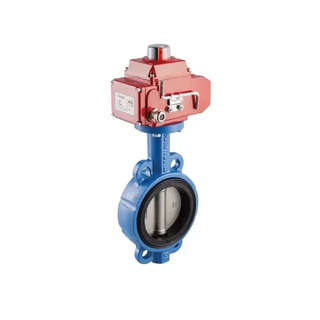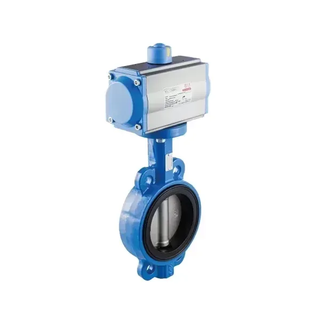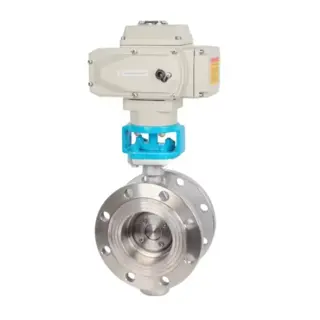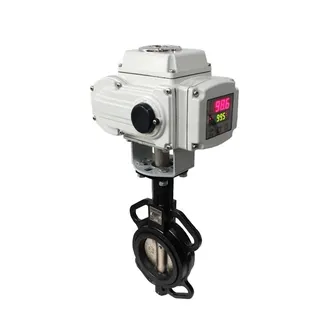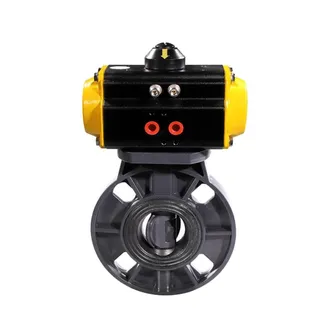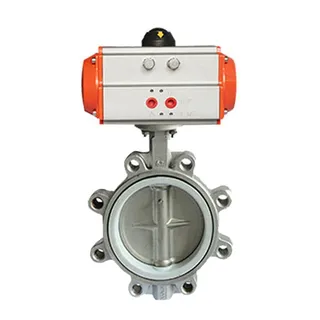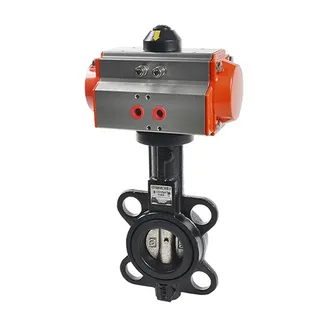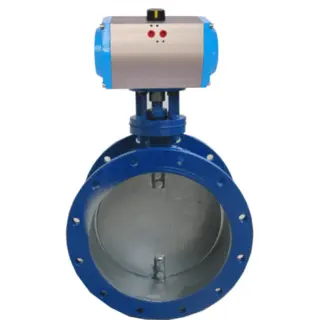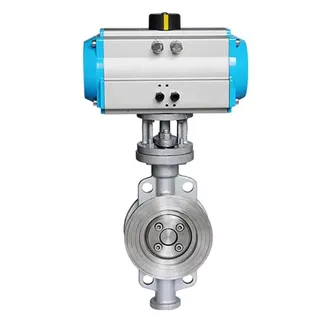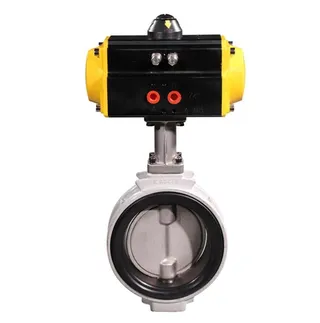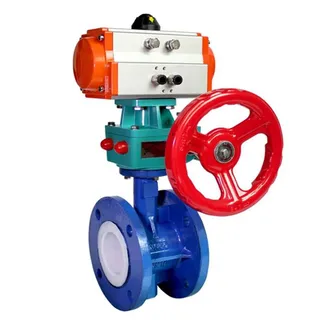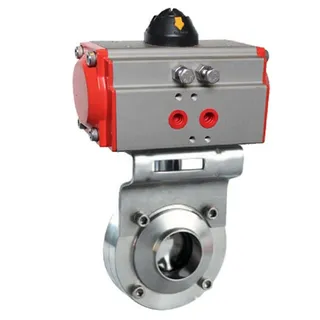Butterfly control valves are widely recognized for their efficiency in both on-off and modulating services, making them an ideal choice in a variety of industries. Known for their lightweight, compact design, they are a cost-effective solution for controlling fluid flow in large pipelines. These valves feature a disc connected to a rod, which rotates to control the flow of fluid. When the valve is opened, the disc aligns with the flow path, allowing fluid to pass through. A simple quarter-turn rotation closes the valve, positioning the disc perpendicular to the flow and stopping the fluid. Butterfly valves are especially valued for their ability to handle large orifice sizes, quick operation, and adaptability across diverse applications such as water treatment, HVAC, and chemical processing.
A butterfly control valve is a type of flow control valve used to regulate the flow of liquids, gases, or steam in a pipeline system. It uses a rotating disc (shaped like a butterfly) to control the flow rate. The disc, which is mounted on a shaft, pivots to open or close the valve, allowing precise flow control. Butterfly valves are especially known for their compact design, lightweight construction, and quick operation.
Wafer-type butterfly control valves are lightweight and compact, designed to fit between flanges using bolt hole alignments. Cost-effective, they are commonly used in HVAC, water treatment, and industrial applications.
Lug-type butterfly control valves feature threaded inserts, allowing the valve to be bolted and removed without disrupting the pipeline. More expensive than wafer types, they are ideal for chemical processing and oil and gas industries.
Flanged-type butterfly control valves have flanges for a secure bolted connection, suitable for high-pressure and high-temperature applications. Though pricier, they offer leak-free reliability and are used in chemical processing, power generation, and oil and gas sectors.
The valve consists of a circular disc (the "butterfly"), which is positioned in the center of a pipe. The disc is connected to a shaft, which is actuated to rotate and control the flow.
When the valve is fully open, the disc is aligned with the flow direction, offering minimal resistance. As the valve closes, the disc rotates to throttle the flow, providing precise control over the volume or pressure of the fluid passing through the system.
Butterfly valves can be operated manually or with an actuator. Electric actuators, pneumatic actuators, or hydraulic actuators are often used for automation, enabling remote or precise control in industrial applications.
Butterfly control valves typically feature soft or hard seating materials, such as EPDM, NBR, PTFE, or metal, depending on the specific requirements (temperature, pressure, and the medium being controlled).
These valves are used in a wide range of industries, including water treatment, HVAC, chemical processing, power generation, and oil and gas. They are especially suitable for controlling the flow of large volumes of fluids in large pipelines.
They are lighter and more compact than other types of valves, like ball or gate valves, making them ideal for space-constrained applications.
Butterfly valves can open and close quickly, allowing for efficient flow control and rapid response to system changes.
Compared to other valve types, butterfly valves are often more affordable while offering reliable performance.
These valves generally require less maintenance due to fewer moving parts and simple design.
Used in systems where accurate flow control is needed, especially in large-scale fluid handling.
They can be used for on/off control but are most effective in throttling flow.
Suitable for controlling temperature and pressure in high-demand systems, especially with the correct actuator and seat material.
Butterfly control valves are essential in many industrial applications for regulating the flow of gases, liquids, and even slurries, providing high performance with ease of maintenance and operation.
Regular maintenance and troubleshooting are crucial for ensuring the reliable performance of butterfly control valves. Key tasks include:
Frequent inspections help identify early signs of wear or damage, preventing more severe issues. Check the valve body, disc, stem, seat, and actuator for any signs of deterioration or malfunction.
While lubrication is generally not needed for the valve itself, pneumatic actuators require lubricated air to function smoothly and avoid damage. Regular checks on actuator lubrication are important for maintaining proper valve operation.
Common issues with butterfly control valves include leakage, poor control response, and sticking. These problems can often be addressed through simple maintenance procedures, such as:
Leakage: Tightening or replacing the valve packing or seals.
Poor Control: Adjusting the actuator or recalibrating control settings.
Sticking: Cleaning the valve body and disc to remove debris, or replacing the actuator if necessary.
By performing these maintenance tasks regularly, operators can extend the lifespan of butterfly control valves and ensure their consistent, efficient performance.

